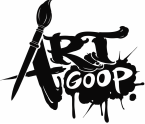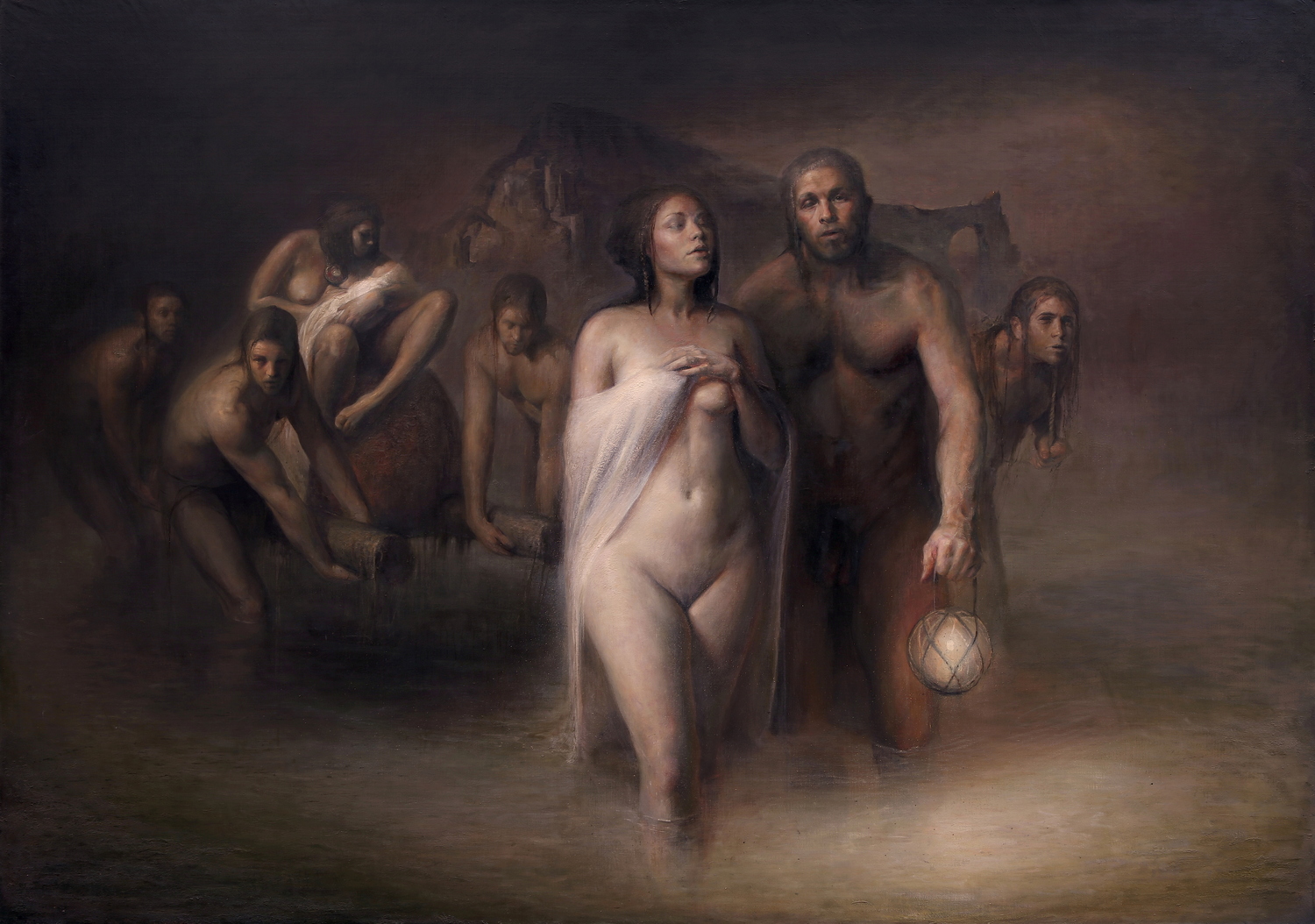|
1. Who were your teachers or influences?
I found a home with the followers of the ancient Greek painter Apelles. My favorites, Titian, Rembrandt, and Odd Nerdrum all share characteristics which have roots with Apelles, such as that rough “macchia” style. Their painted flesh is famous for feeling “fleshy.” There is a heightened sense of drama and pathos in their pictures. Also their masterpieces tend to be quite dark. The most talented and trained in this lineage have a special kind of freedom because their concern is no longer much about style or fashion. They are free to go deep into the narratives and to work at portraying believable and recognizable emotions. There are many more who have taught me. A few names I should mention are G.F. Watts, Käthe Kollwitz, Goya, Eugène Carrière, and Andrew Wyeth. 2. What techniques or tricks did you find most useful when learning to paint? I will say something about kitsch later on. Regarding painting technique, the brush is one of many good tools for manipulating paint. Rags and fingers often work better for some things. But we can do more than just add paint. We can play around with removing it by Sanding, scraping, and also wiping with turp. (Make sure to take all health precautions!) Rembrandt used coral to scrape his paintings. I especially envy how skilled Rembrandt is with the palette knife. I tend to stick with the “fat over lean” idea. In other words, if I need medium, it is more turp early on and then more oil towards the end of the piece. This allows it to dry evenly. I use Nerdrum’s marble dust ground recipe on Linen. It is unlike anything I’ve found on prepared canvases in stores. It grips the paint. I find it very awkward to work with gesso on cotton now. There are countless ideas when it comes to composition. I learned one of my favorites in music, but it applies to painting, Theme and Repetition. Identify a primary shape and find ways to repeat it rhythmically in the picture. Like the repeated “V” in Titian’s “Punishment of Marsyas.” When done well, it may be unnoticeable to the average viewer, but it creates a pleasing, dance-like, atmosphere. 3. What are 3 key principles of making good art, in your opinion? Kitsch is probably the best name for what I make and like. To make high-Kitsch I see at least 3 key principles. 1 - Work to make the painting as pathetic, sentimental, or dramatic as possible. If, along the way, the piece feels “cheesy” or like the characters are “poor actors,” it is probably because the expressions do not feel believable with the narrative. Aristotle writes about this in his thoughts about “Mimesis” in his Poetica. 2 - As you make a work, compare it to pieces that you want it to resemble. A side by side comparison with a masterpiece can feel like an ego crush, but it is probably the best way to learn. Solutions to problem areas often seem to pop out. Be careful though, imitation is a largely undervalued skill in our time. We take on this topic in this video - https://www.youtube.com/watch?v=xBXaj4lMz0o 3 - Some people ask us to be ourselves. To me this is a funny request. If by this they mean, embrace being earnest, then I would agree. I like when people say and paint what they mean. I would also like more painters to make images of what the want to be true. Many painters say they want their work to “change the world.” OK. Change it in what way? I have known some prophets who have painted things into reality. This is a dangerous skill. If you ever realized that a painting you made came true, I imagine you were first a bit shocked, and then considered being more earnest about your next project. 4. What are the most common mistakes that you see other artists make? When people work from photo they often let the photo decide what is best, whereas their imagination and judgement could actually improve it. These folks would do well to work without photo for a while to realize the possibilities. Working with live models can be a dramatic process for the beginner. It is is often expensive or difficult to arrange. But after live-model techniques are habitualized the painter is much more free. There is the issue of time. I can’t call it a mistake to paint infrequently, but many of us underestimate how much time a successful painting will take. I often hear cases where master painters claim their work consistently takes more work than they would have imagined. Classical painting is one of the biggest time consumers I know about. So until the 21st Century Classical Renaissance is well established, be prepare for your pay-to-hour ratio to be … out of sync. 5. Can you break your painting process down into 10 steps, or less, for us? 1 - Doodles and thumbnail sketches. This step is good at night or on trips. 2 - Get the materials ready. First stretch, then “Size/glue” the Linen (Some use Rabbit skin glue) 2 layers. 3 - Mix and apply Odd’s Oil/Marbledust mixture - 2-3 layers (sometimes a layer takes a week to dry) 4 - Transfer the sketch/idea to the canvas. (often a grid is helpful for this) Then play with the composition until it feels natural. 5 - Usually go with the figure/s first. 6 - Determine setting/background 7 - Change things, struggle, change things, struggle… 8 - After a plateau, hide the painting. After a while, come back to it. If I love it, great. If I don’t, take it back up or hide it again. 9 - If I love it, then varnish if needed. Interview with Luke Hillestad on Youtube: www.youtube.com/watch?v=xBXaj4lMz0o
0 Comments
|
Art GoopArt Goop is a Q&A for artists by artists. We ask questions designed to examine the techniques and methods of some of the most inspiring artists working today. Categories
All
Archives
September 2017
|


 RSS Feed
RSS Feed